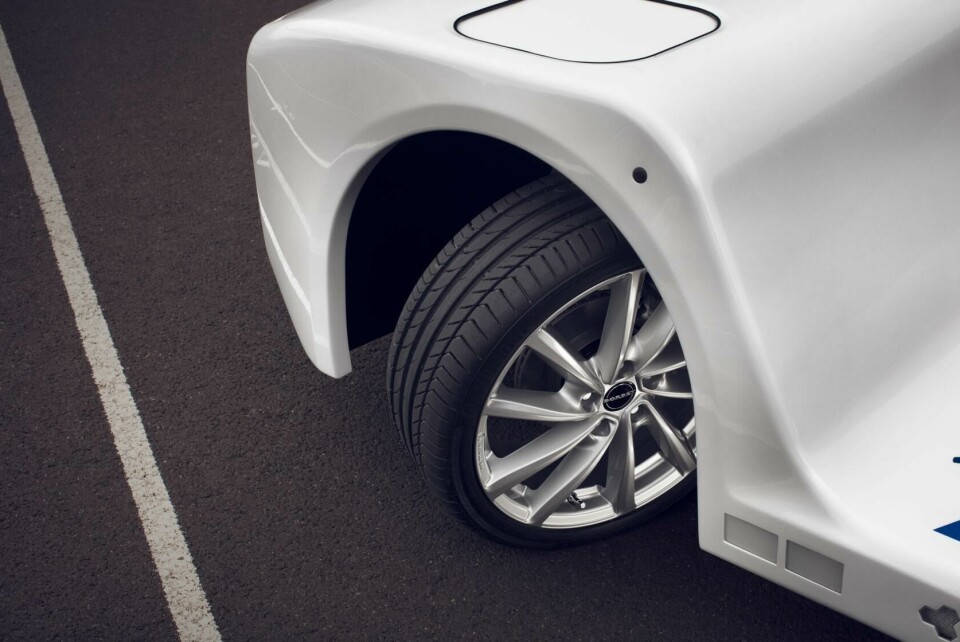
Rinspeed Snap mobility concept unveiled
Separating the interior space from the automobile, both literally and philosophically
We have seen the concept of an autonomous ‘room on wheels’ increasingly in recent university shows, but an engineering firm has gone one better by building a full-size running prototype. Rinspeed – which considers itself a “Swiss powerhouse of ideas” – has unveiled the Snap mobility concept, comprising an electric skateboard chassis and removable ‘pods’ for occupants.

The Snap, which is the 24th vehicle concept to spring forth from said ideas powerhouse, is envisioned as part of an ecosystem wherein the Level–5 self-driving chassis and the glassy, cuboid ‘pod’ bodies can exist separately from each other, with the chassis having a shorter operating life before being recycled and replaced.
The pods can either be carried around or detached and stood up on their own feet to function as a temporary building for a variety of purposes.

Rinspeed are better at making concept cars than subtle visual metaphors
Because the chassis will be replaced more often, it carries around the IT systems as well, so more up-to-date computer hardware and software can be fed into the ecosystem without changing pods as often. Sitting on 7x18-inch wheels with low-resistance tyres, the 4.7m-long chassis unit is powered by a 12kWh battery feeding electricity to a 51kW (67bhp) motor on the rear axle.

Curiously, Rinspeed quote the top speed as ‘over 80km/h’ and then claim it does 0-100km/h in five seconds flat. More important than that, though, is that with steering angles of up to 70° at the front and 14° at the rear, it has an excellent turning circle.

The design has almost no directionality to it, with the bodysides being symmetrical front-to-rear, both in the body and the chassis. The only signifier is in the lighting panel, showing headlights or taillights (as well as battery level). This strengthens the Snap’s impression of being a mobile building rather than a car.

The interior features two pairs of fixed seats facing each other – not configurable like other concept AVs – which are then separated by a back-to-back pair of giant infotainment screens, containing general information like navigation or safety alerts, as well as being usable as movie players (surround sound helps with that).

An individual ‘Hover Tab’ screen also hangs from the ceiling, closer to each seat, in case you aren’t distracted enough yet. These can be controlled by individual control modules between the pairs of seats.

The vehicle is supported by just about every form of wireless connectivity possible – Wi-Fi, V2X, Bluetooth, broadcast radio, 5G – in a bid to increase the number of possibilities for using the space to network, do business and so on.

On a security level, customers sign into the cloud using facial recognition, plus another biometric ID system if medical data is required. Once it’s time to leave the Snap, everyone’s data is deleted from the vehicle’s system.

As well as the safety of data, the safety of pedestrians must be considered. To this end, the front and rear windows can display large messages and icons to communicate visually to people and other vehicles. The side windows can also be used to display things to people getting in or out of the car.

The versatility of this concept will certainly appeal to many, but the viability is another question; its dependence on Level-5 autonomy in order to work means that we shouldn’t expect this to go into production for a few years yet, if at all.

But whilst you may not be about to see market squares and bus lanes full of Snap pods this decade, this remains a very thorough and comprehensive study into solving the problems surrounding urban mobility.
The Rinspeed Snap will be exhibited at CES in January, as well as the Geneva Motor Show in March.



